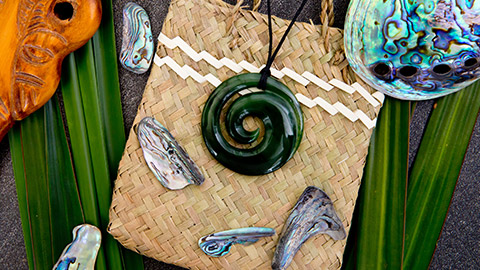Collins DictionarySomeone’s cultural awareness is their understanding of the differences between themselves and people from other countries or other backgrounds, especially differences in attitudes and values.
People don't leave their culture and values at home when they head to work or to a movie, restaurant, or friend's home. Having respect for people's cultures in all environments is crucial to successful endeavours in New Zealand.
Three basic principles of cultural awareness:
- Cultures are dynamic. They change over time.
- Individual people can identify with cultural groups.
- A person does not automatically become emblematic of their culture, and to assume they can, can be taken with offence.
What it means for you to be culturally aware
It means that you are conscious of the images you use to portray the cultural environment of your characters. You think about how you represent culture, especially how it connects to the meaning of the message you are depicting and staying authentic to people's genuine experience of it. Cultural awareness comes about when designers are open, curious, questioning, and respecting others' views regardless of how different they are from yours.
Another area of caution is in 'cultural appropriation'. When representing an idea from a culture that you do not understand, it is essential to seek advice from a member of that culture who is happy to speak on behalf.
What is cultural appropriation?
According to Wikipedia, "cultural appropriation is the inappropriate or unacknowledged adoption of an element or elements of one culture or identity by members of another culture or identity."
For example, let us say your client wants you to create digital marketing material for their sandstone tiles. The client is fascinated by the Egyptians. Which would be the most respectful idea?
- Beautiful Caucasian women (that would be great for the target audience) dressed up in Egyptian clothing, sitting on the tiles while being fanned by other beautiful women and fed grapes.
- Express the history of sandstone used by the Egyptians while conveying the message of how it has lasted through the centuries and is a trusted product.
There is a balance between appealing to your target audience and respecting what your digital products represent.
An example of perceived cultural appropriation is by designer Jean Paul Gaultier. He used Māori-inspired moko (facial tattooing) designs in a 2007 French fashion campaign, sparking outrage.

Design with cultural sensitivity
When designing, you have the power to create designs that create influence. The responsibility lies with you to wield this power to combat misinformation and confirmation bias and provide truth. By doing this in an authentic way, you convey respect for people's cultures and provide your audience with a deeper understanding of your message, characters, and the culture you are depicting in your work.
The Treaty of Waitangi (Te Tiriti o Waitangi) is New Zealand’s founding document. It takes its name from the place in the Bay of Islands, where it was first signed on 6 February 1840. This day is now a public holiday in New Zealand. The Treaty is an agreement, in Māori and English, that was made between the British Crown and about 540 Māori Rangatira (chiefs).
Let's take a look at the events that have taken place prior to the establishment of New Zealand's founding document.
Culture puts constraints on human behaviour, thinking processes and interaction. Cultural constraints are either:
- prescriptive: people should do certain things OR
- proscriptive: people should not do certain things.
Cultural constraints go a long way toward telling people what they can do, where they can choose, with whom, where and how they can interact, and they also help solve the problem of having to compare seemingly incomparable things.
Cultural constraints and conventions are about what people believe and do, and the only way to find out what people do is to go out into their normal environment and watch them. They encourage you to engage in discussion and to be open and curious.
When we view culture as a stream that has flowed down the centuries from one generation to the other, it creates the respect that cultural restraints can appear in cultures based on protection, conservation or generational beliefs.
There are also cultural restraints outside certain cultures. For example, there are prescriptive constraints placed by the New Zealand Government in order to preserve Māori heritage and art. Creative New Zealand is one organisation that has moved progressively to assist and encourage the arts. Many movements in Aotearoa and organisations have been implemented to preserve and grow rural traditions.
Reading

This document is an excellent resource for learning the mātauranga Māori (traditional knowledge) you must know to do your part as a good treaty partner.
To build strong connections and relationships with Māori clients, customers, iwi, or individuals, you must first understand the world in which we live - Te Ao Māori (the Māori world.)
Download the PDF: Māori Culture and Tikanga Practices
Constraints, as a designer, can occur in many ways. Consider:
- Constraints of the culture of the company
Having strict guidelines of what to do and how to do it based on the company's beliefs, values and the ways they 'have always done things'. - Creative constraints
These relate to finances, resources, timelines and what the company would like. - Cultural constraints
Cultural constraints are about respecting the history and story of a culture. You may think you are being creative by redesigning a cultural pattern or reusing it for something else - but not without knowledge of its history and/or seeking the permission of elders. It also has a lot to do with intention and context. If you were advertising a new shampoo and thought that the cultural patterns looked appealing, then this would be highly disrespectful. Whereas if you were approached by a Māori group to create something for their upcoming cultural event and used their cultural patterns with reverence and permission, this is being respectful.
Constraints are not always a limitation. This next video explains how constraints hold power.
Case Study: The Great Kiwi Beer Festival Posters
The producers of the iconic Christchurch event, The Great Kiwi Beer Festival, designed their posters in a way they thought they were being inclusive of Te Ao Māori by using a hei tiki as part of their poster artwork, as shown in the following image.

Once the producers were made aware of the cultural significance of this symbol — that it represents the circle of life with a connection to both ancestors and childbirth, they changed their design. It was determined that those cultural notions do not mix with alcohol use and, therefore, shouldn't be used to promote it.
Take a look at the poster from 2023. Can you spot the change?

Note they swapped out the hei tiki for a more appropriate hops flower.
Important
✋ Stop now
Please do Design Assessment – Matariki Event CCM403.1
Before continuing with this course, please submit the first of two assessments for Design/Web. The assessment covers all of the material up to this point in this course:
- The design process
- Composition
- Target audience
- Visual design
- Commercial design
- Marketing campaigns
- Cultural awareness in design
Waimarie pai. Good luck, and we hope you have some fun with it!
